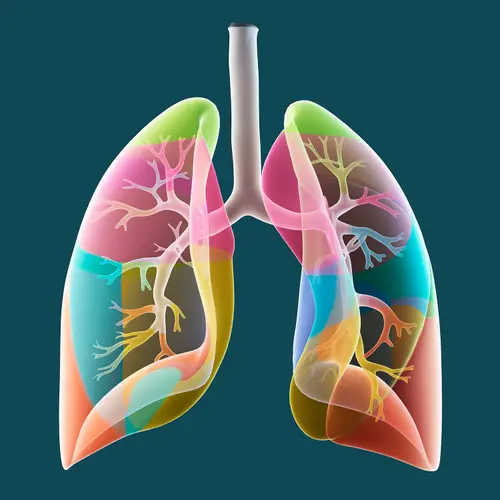By Edward Garon, MD, as told to Rachel Reiff Ellis
Non-small-cell lung cancer (NSCLC) is a very prevalent disease. But disease rates have gone down -- and hopefully will continue to go down -- over time. This is in part because of preventive measures: Fewer people are smoking cigarettes. Although there are many people who have lung cancer who have never been smokers, cigarette smoking is far and away the leading cause of lung cancer.
Treatment Now
To understand where NSCLC treatment is headed, it helps to understand where it is now. The two main things we need to evaluate when someone is diagnosed in order to decide on a treatment approach are the extent of disease and the molecular abnormalities present in the cancer.
When the disease is in its early stages and hasn’t spread beyond where it started, the most common approach is surgery to remove part and sometimes all of the lung. One of the main problems in lung cancer treatment has been that most people aren’t diagnosed until their disease has progressed past this point. We’ve been working to identify lung cancer earlier so that treatment approaches such as surgery are still an option. We believe that with effective screening, we can cure more people.
For people whose disease has spread beyond the lung to involve a regional, or close-by, area, treatment is a bit more complicated. But we still approach it with the intent to cure. We may use a mix of surgery, radiation, chemotherapy, and immunotherapy. In people with metastatic disease, where the cancer has spread outside the chest, local therapies aren’t effective. Then we look at others that will work throughout the entire body. This can mean immunotherapies, targeted therapies, or additional chemotherapy that is sometimes called cytotoxic chemotherapy.
Advances in Treatment
There have been significant advances in the use of targeted therapies. When we say “targeted” therapies, we don’t mean physically targeted the way radiation is. Instead, we mean they’re targeted to specific abnormalities in an individual’s tumor. It was less than 20 years ago that we had a breakthrough with the drugs that targeted proteins called epidermal growth factor receptors (EGFR). EGFR is a protein on the surface of cells that helps them grow and divide. Some NSCLC cells have too much EGFR, which makes them grow faster.
We recognized that EGFR-inhibiting drugs worked only in tumors that had a mutation, or change, in the EGFR gene. That led to the discovery of several different mutations and the development of seven new FDA-approved therapies that treat these specific mutations. There are now approved tests in our diagnostic workup that check tumors for these mutations so we can move forward with the right therapy. We can use these treatments on nearly 20% of people with lung cancer in the U.S. This has greatly improved their outlook.
Two major sorts of breakthroughs in treatment have come together to move this needle for several cancers, but particularly non-small-cell lung cancer. My division chair here at UCLA Jonsson Comprehensive Cancer Center is Dennis Slamon, MD, who characterized the Her2/neu oncogene. Her2/neu is a protein that makes certain cancers grow faster. He then helped develop trastuzumab, which is an antibody specifically directed against that particular abnormality.
Before that, researchers weren’t looking to divide a common tumor into groups. But we now recognize that by doing that, we can develop treatments for small groups of people and even some rare mutations. Often there are now multiple different drugs available, even for fairly rare subtypes of lung cancer. Also, the use of immunotherapy has really changed the outlook for people with lung cancer. Some live very healthy lives with a normal lifespan, sometimes even with no further therapy.
Where Treatment Is Headed
There are approaches coming down the pipeline that we hope will improve on all three of the major types of therapies that go throughout the body, or what we call systemic therapies: chemotherapy, immunotherapy, and targeted therapy. For chemotherapy, the major advance is what we call an antibody drug conjugate. These are drugs that essentially attach chemotherapy to an antibody. The antibody homes in on a specific protein on the tumor. This approach would help kill tumor cells more than normal cells.
There are also efforts to both expand the number of mutations that we can effectively treat with targeted therapies, as well as improve upon the treatments that are already available.
And with respect to immunotherapy, which induces your own immune system to try to fight against the disease, we’re working on our ability to bring the immune system into treating cancer. Many times, we’ll use drugs that target other parts of the immune response.
Looking to the Future
In terms of the outlook for NSCLC, we believe that with an effective screening program, we would be able to cure more people, for instance, by surgery. Also, some of our newer therapies make it less likely the disease will come back, or at least put off the return of disease in people with locally advanced disease who’ve had surgery. The use of immunotherapy has made it more likely that people will survive long-term, even those who have advanced disease. Before this, long-term survival was uncommon.
Our goal is to be able to view NSCLC as a “chronic” disease. This means that over time, with the right treatment, people who have it are able to lead a completely normal life. We still aren't quite there. The cancer cell eventually figures out a way. But our march toward making it a chronic disease is real, and we continue to hope that we’ll push even beyond that in the future.

